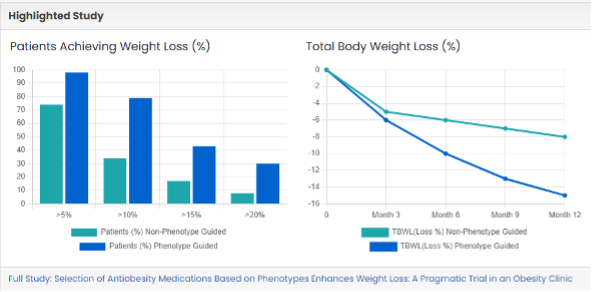The issue:
Obesity, defined as a BMI of 30 or higher, is a serious disease that affects more than 40% of adults in the U.S and is a contributing risk factor to numerous chronic conditions often resulting in high medical costs. While the first GLP-1 drug to facilitate weight-loss was introduced in 2014 under the brand name of Saxenda, it wasn’t until 2021 and 2023 with the launch of Wegovy and Zepbound respectively that people began to seek pharmacological agents to augment their weight loss journey. Recent data shows that only 25% of people taking these drugs remain on them after two years, largely due to costs, side effects, or sub-optimal results.
A possible solution:
Phenotyping is a way to classify obesity based on biological mechanisms. This information helps determine which patients will respond optimally to GLP-1 weight loss drugs. Dr. Andres Acosta, a leader in obesity phenotyping research at Mayo Clinic, has developed a scientific approach to classify obesity into four phenotypes:
- Hungry Brain is an individual who is unable to experience satiation or lacks the off switch that the body is full.
- Hungry Gut is an individual who feels full shortly after eating but then gets hungry soon after and experiences cycles of eating and not eating.
- Emotional Hunger is when a person eats as a result of positive or negative emotions. High levels of cravings, anxiety and depression are experienced.
- Slow Burn refers to people with a slow or lower than normal metabolism and characterized by low muscle mass and abnormal metabolite rate.
The testing process begins with a saliva test kit ordered from Phenomix Sciences by the treating physician. The results take 3 to 5 weeks and are returned to the treating physician to guide them on which of the four phenotypes their patient has pinpointing specifically what is driving their patient’s weight but more importantly, identifying if the patient will likely see results from a GLP-1 weight loss drug. This personalized scientific approach enables more effective treatments and informed medical decisions to be made based on the patient’s dominant obesity phenotype (Graph1 below).


